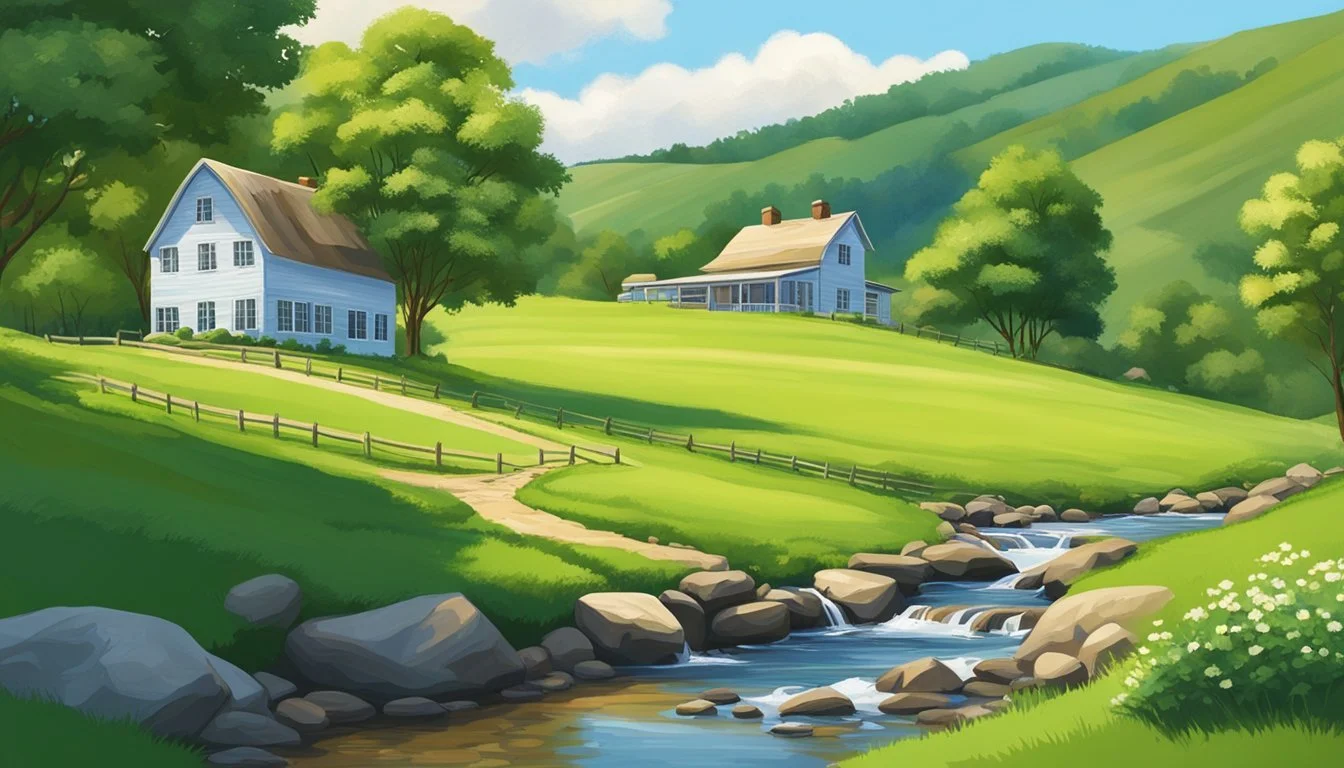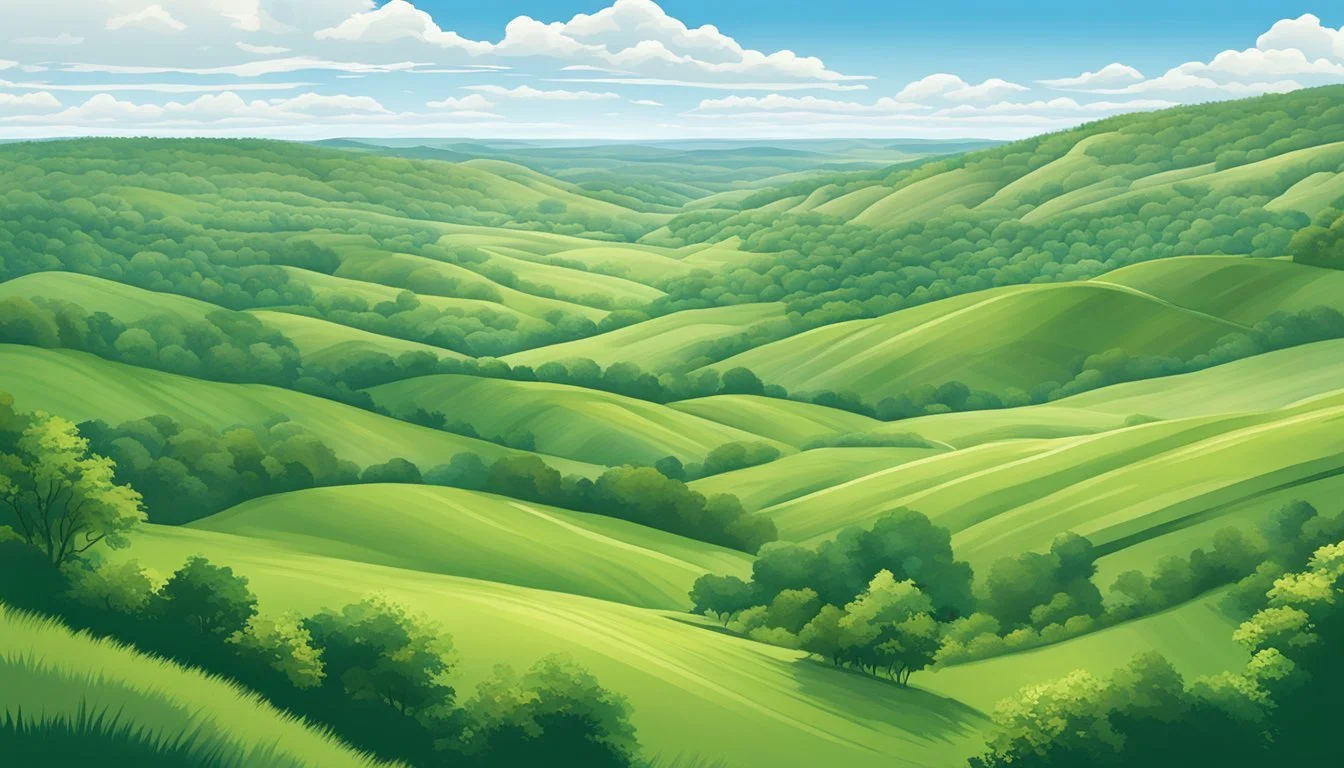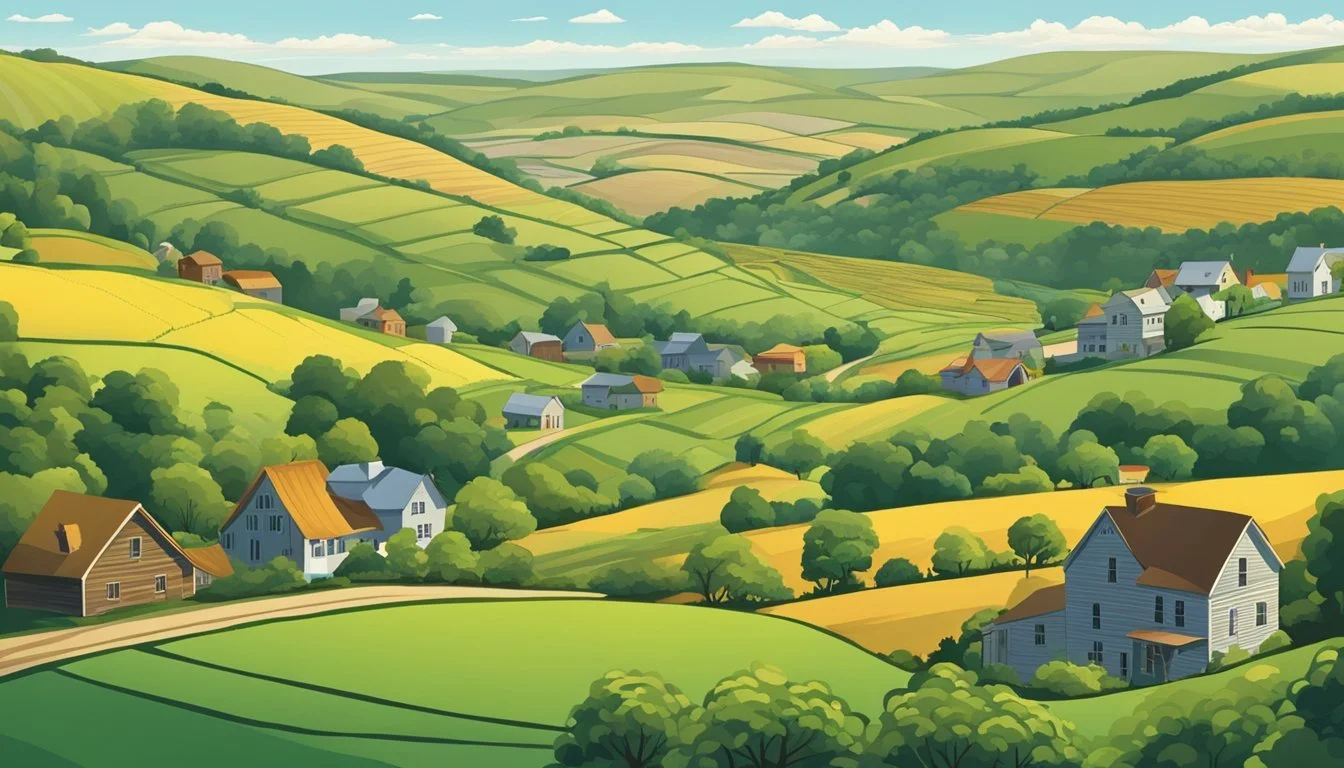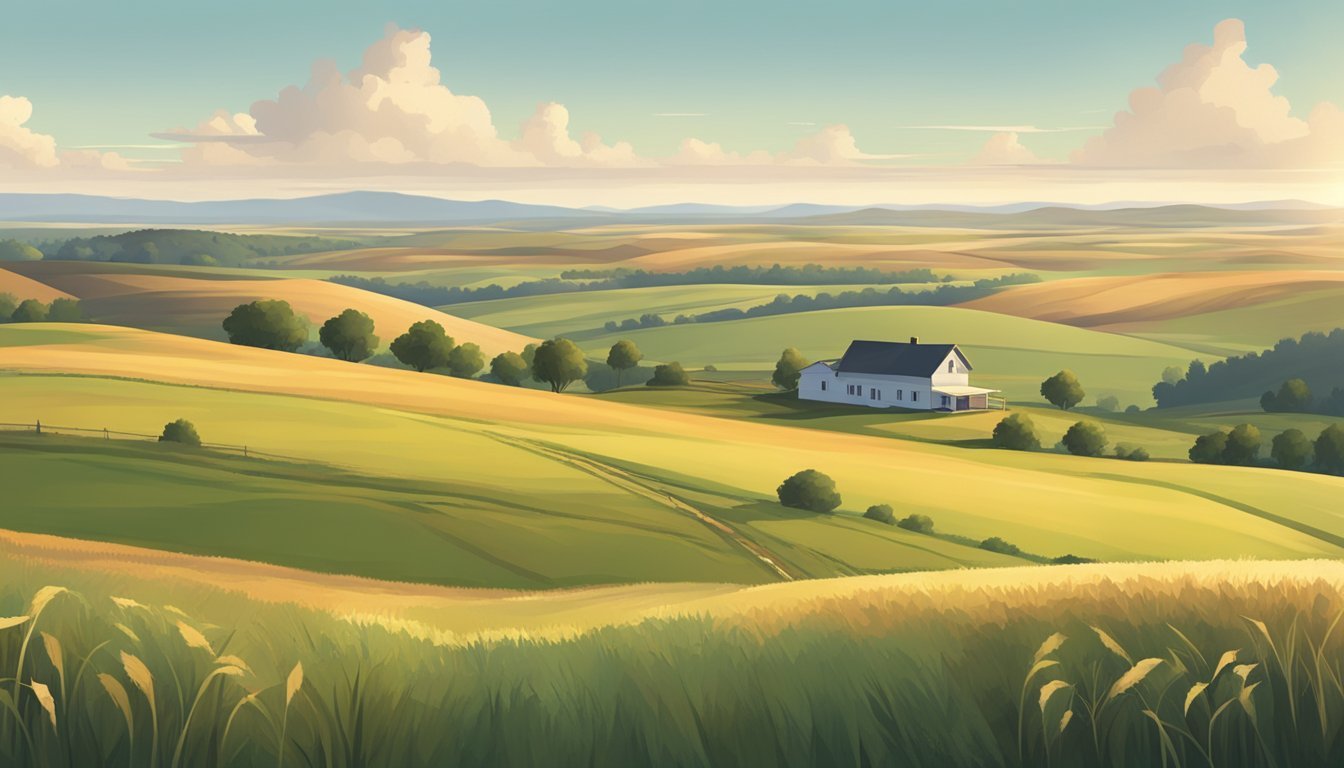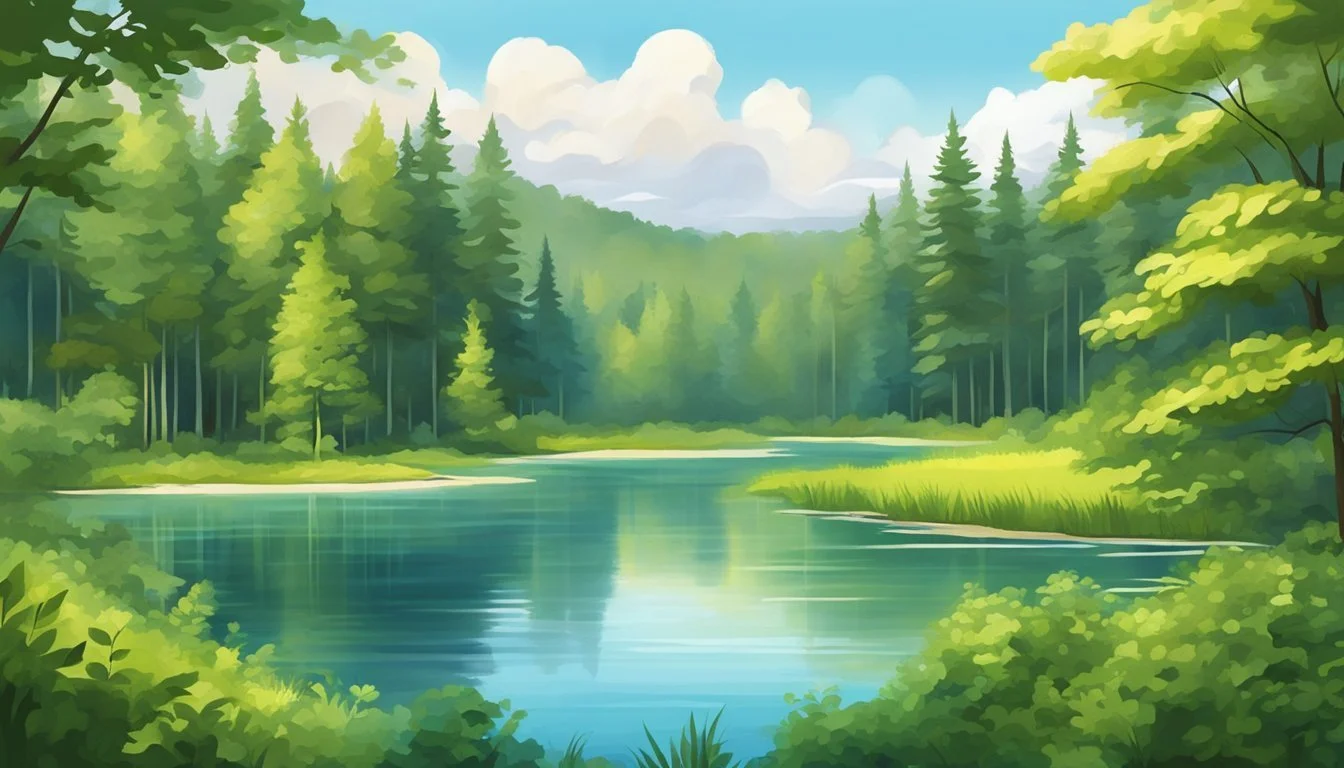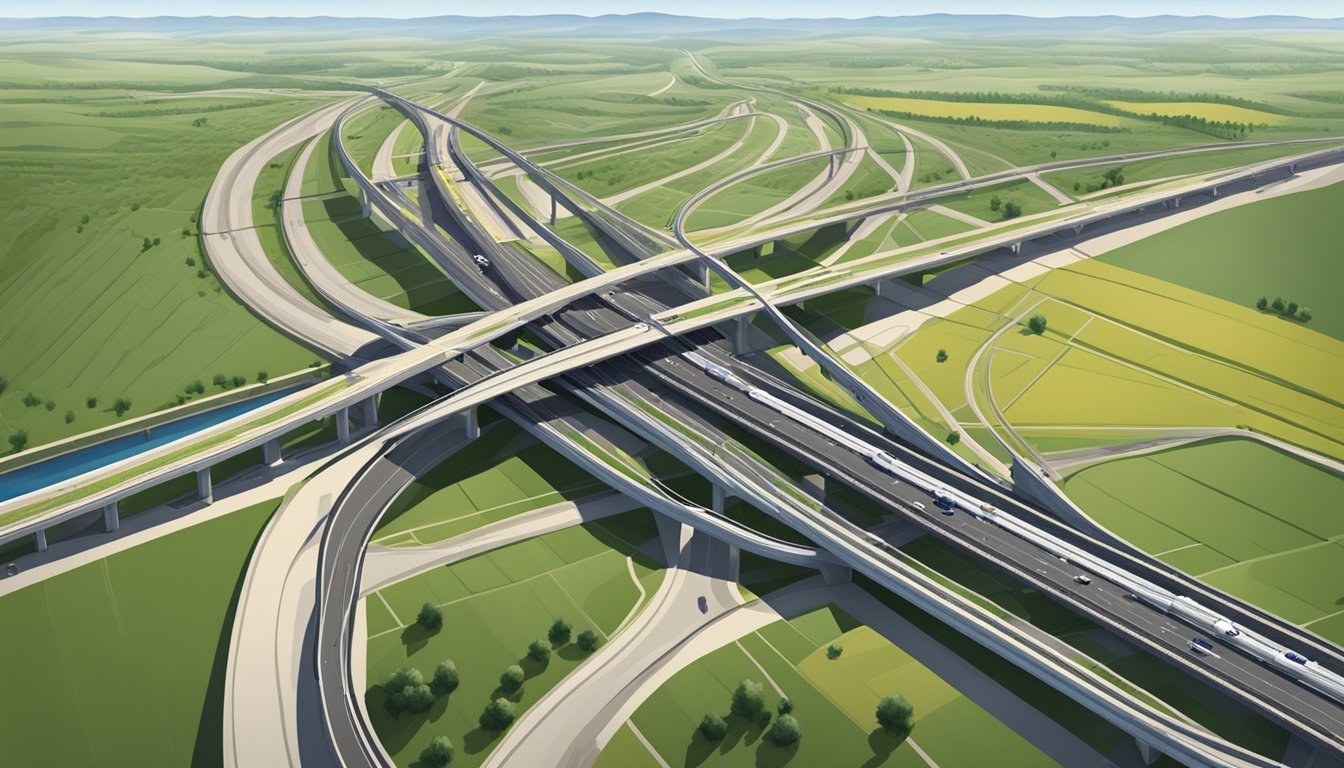Upper Midwest Free Land
Opportunities for New Settlers
During the late 19th and early 20th centuries, the Upper Midwest of the United States became a focal point for those seeking free land and new opportunities. The promise of free land attracted many settlers to states like Iowa, Minnesota, and Wisconsin, where the rich soil and wide-open spaces promised new beginnings. Many towns in this region embraced these programs to attract settlers and stimulate growth.
While the idea of free land evokes images of boundless opportunities, the reality was often more complex. Some towns succeeded in attracting long-term settlers, while others saw temporary spikes in population that eventually dwindled. Despite these challenges, the legacy of such land programs remains a significant chapter in the history of the Upper Midwest, highlighting the enduring appeal of starting anew and the complexities of land ownership and settlement.
Efforts to provide free land weren't without their difficulties. Factors such as location, economic conditions, and community services played crucial roles in determining the success of these programs. By examining the historical and current impacts of these initiatives, one can gain a deeper appreciation for the transformative power of land ownership and its role in shaping the Upper Midwest.
Historical Context
The rich history of the Upper Midwest, often linked with areas such as Michigan, Wisconsin, and Minnesota, is marked by a series of distinct periods and cultural influences. These include the indigenous roots of the region, the waves of European settlers, the flourishing timber industry, and the rise of agriculture.
Native American Roots
Long before European settlers arrived, the Upper Midwest was home to numerous Native American tribes. The Ojibwe, Dakota, and Ho-Chunk tribes, among others, had established complex societies. They utilized the region’s abundant natural resources, engaging in fishing, hunting, and agriculture.
Native trails and waterways facilitated trade and communication. These paths later influenced the routes of European explorers and settlers. Cultural practices and land stewardship by indigenous peoples laid foundational aspects for the region’s ecological and social landscapes.
European Settlement
European settlement began in earnest with French fur traders in the 17th century, followed by British and eventually American settlers. The Old Northwest Ordinance of 1787 played a crucial role by organizing territories and establishing orderly development patterns.
The opening of the Erie Canal in 1825 accelerated migration from states like New York and New England to the Midwest. This migration reshaped the demographics and economies of states such as Michigan and Wisconsin. Land speculation and settlement acts incentivized pioneers to move and establish new communities.
The Timber Boom
The rich forests of the Upper Midwest spurred a significant timber boom in the 19th century. Regions like northern Michigan and Wisconsin became centers of a growing lumber industry that supplied the burgeoning national economy. Logging towns sprang up almost overnight, driven by the demand for wood from urban centers.
Sawmills and railroads expanded rapidly, supporting the movement of timber to markets across the country. This boom had lasting impacts, not only on the economy but also on the landscape, leading to extensive deforestation.
Agricultural Beginnings
Agriculture gained prominence as timber resources dwindled. Early pioneers converted vast tracts of land into farmland, focusing initially on wheat production. The fertile soils of areas like the Red River Valley proved highly productive.
Railroad development further integrated the Upper Midwest into the national economy by facilitating the movement of agricultural products to major markets. As wheat yields declined in older areas, farmers diversified their crops, adapting to changing conditions and market demands. This transition solidified the region’s identity as a significant agricultural hub.
Geographical Overview
The Upper Midwest encompasses diverse landscapes, significant waterways, and distinct climate variations across several states. Each subtopic explores specific details about the landforms, water bodies, and climatic differences that shape this region.
Landform Regions
The Upper Midwest features various landform regions, including the Driftless Area in Wisconsin, southeastern Minnesota, northeastern Iowa, and northwestern Illinois. This area, untouched by the last glacial period, is characterized by deep river valleys and algific talus slopes. Other parts of the region, such as Michigan and Minnesota, exhibit landscapes shaped by glacial drift, consisting of rolling hills, lakes, and fertile plains.
North Dakota and South Dakota primarily include the Great Plains, marked by flat terrains and gently rolling hills. Nebraska, primarily consisting of plains, features unique sandhills formed by ancient wind action. These geographical features offer a mix of agricultural land, forests, and urban areas, contributing to the region's diversity.
Important Waterways
Significant waterways define the Upper Midwest and include the Great Lakes—Lakes Superior, Michigan, and Huron. These lakes play crucial roles in transportation, recreation, and ecosystems. Lake Superior, bordering Minnesota, Wisconsin, and Michigan, is the largest and deepest of the Great Lakes.
The Mississippi River originates in northern Minnesota and travels south, forming borders between several states including Wisconsin, Iowa, and Illinois. This river is essential for trade, agriculture, and wildlife habitats. The Upper Mississippi River, integral to the Midwest, supports both economic activities and ecological diversity.
Other water bodies include the Missouri River in North and South Dakota and the Red River in Minnesota and North Dakota, which further contribute to the region's drainage systems and agricultural irrigation.
Climate Variances
The climate in the Upper Midwest varies significantly. Minnesota and Wisconsin experience cold winters with considerable snowfall, while Nebraska, Iowa, and South Dakota often have a mix of hot summers and cold, dry winters. Michigan's Great Lakes reduce temperature extremes, creating milder conditions along the coastlines.
North Dakota and parts of the Dakotas may have more severe winters with temperatures frequently dropping below freezing. Summer temperatures across the region can vary broadly, with some areas experiencing humid conditions while others remain dry.
The climatic differences influence agricultural practices, infrastructure resilience, and living conditions, highlighting the Upper Midwest's adaptability and varied environments.
Economic Development
The economic development of the Upper Midwest has been significantly shaped by industries such as mining and agriculture, the construction of an extensive railroad network, and the ongoing modernization of industrial sectors.
The Mining Industry
Mining played a crucial role in the economic development of the Upper Midwest. The region is rich in natural resources, particularly iron and copper. Mines in states like Minnesota and Michigan extracted vast quantities of these minerals, fueling industrial growth and providing essential materials for manufacturing. The iron mined from the Upper Midwest was vital for the steel industry, which in turn supported railroad construction and urban development.
Expansion of Agriculture
Agriculture was central to the Upper Midwest's economy, with crops like corn, hay, wheat, and soybean dominating farmland. By 1890, the development of the railroad system facilitated the movement of agricultural products to markets in the East. Wheat cultivation initially thrived in the region but later shifted as yields diminished. Farmers adapted by diversifying their crops and incorporating modern machinery, enhancing productivity and sustaining the agricultural sector.
Impact of Railroads
The extensive railroad network was a key driver of economic growth in the Upper Midwest. Railroads connected rural areas with major urban centers, integrating the region into the national economy. This transportation infrastructure allowed for the efficient movement of timber, minerals, and agricultural products, supporting both local communities and national markets. Additionally, the railroads stimulated urban development and contributed to the rise of new towns and cities across the region.
Modern Industrialization
Modern industrialization in the Upper Midwest has evolved from its agricultural and mining roots. The region has seen a shift towards a more diversified economy with the growth of manufacturing and technology sectors. Industrialization has brought advanced machinery and innovative production techniques, enhancing overall efficiency. This transformation has ensured the Upper Midwest remains a vital economic hub, with its industries continuing to adapt and thrive in a dynamic global market.
Natural Resources and Conservation
The Upper Midwest offers rich natural resources, necessitating focused conservation efforts to balance ecological health and economic activities. This region is known for its vast forests, abundant water bodies, diverse wildlife, and unique geological features.
Forestry and Timber Industry
The Upper Midwest's forests are a critical asset, dominated by pine and oak species. These forests support a robust timber and lumber industry, which plays a major role in the local economy.
Sustainable forestry practices are essential to maintain these resources. Many areas are managed for both timber production and wildlife habitat. The Nature Conservancy promotes conservation programs that aid in balancing logging activities with ecosystem preservation.
Water Resources and Fishing
Thousands of lakes and rivers in the Upper Midwest provide vital water resources. These water bodies support both recreational and commercial fishing industries, crucial for local economies.
Conservation measures focus on preserving coldwater habitats vital for boreal species. Protecting and restoring forests around lake watersheds is vital to maintain water quality and fish populations. Active management practices aim to prevent pollution and overfishing, ensuring sustainable aquatic ecosystems.
Wildlife and Habitat Protection
Wildlife in the Upper Midwest includes species varying from the Iowa Pleistocene Snail to larger mammals like deer and bears. Habitat protection efforts are vital for preserving this biodiversity.
Key conservation actions include protecting and expanding habitats in forests, wetlands, and prairies. The region's geological features—such as caves and sinkholes—often provide unique habitats for endangered species. Collaborative efforts between local governments and organizations like The Nature Conservancy ensure these efforts are both strategic and effective.
Demographic and Cultural Composition
The Upper Midwest's demographic and cultural composition is shaped by diverse migration patterns, ethnic influences, and the divide between urban and rural areas. These factors contribute to the region's unique identity.
Migration and Settlement Patterns
Migration to the Upper Midwest has historically been driven by opportunities in agriculture and industry. In the 19th and early 20th centuries, Europeans, particularly from Germany, Scandinavia, and Ireland, settled in the region. These groups established communities that held onto their cultural traditions.
In more recent decades, there has been an influx of Hispanic and African American populations, especially in urban areas. Seeking economic opportunities, they have significantly influenced the cultural landscape. Migration trends continue to shape the economic and social dynamics of cities and rural areas alike.
Ethnic and Cultural Diversity
The Upper Midwest features a rich mix of ethnic groups. German and Scandinavian heritage remains strong, especially in states like Wisconsin and Minnesota. Festivals, foods, and community events reflect this heritage.
Urban centers like Chicago have more diverse populations, including significant African American and Hispanic communities. These ethnic groups contribute to the vibrant cultural mosaic through cuisine, music, and cultural festivals. This diversity fosters a blend of traditions and contemporary cultural expressions.
Urban and Rural Dynamics
The region displays a stark contrast between urban and rural areas. Major cities like Chicago and Minneapolis boast diverse and dense populations. These urban hubs are characterized by bustling economic activities, extensive cultural amenities, and educational institutions.
Conversely, rural areas are often more homogeneous, with communities heavily involved in agriculture and manufacturing. The rural parts of the Upper Midwest tend to preserve traditional lifestyles and culture compared to the cosmopolitan nature of its cities. Despite this, smaller towns are slowly becoming more diverse due to recent migration trends.
Current Issues and Politics
Modern-day land policies in the Upper Midwest, environmental legislation, and political movements are shaping the region significantly. The interplay between these areas affects residents, newcomers, and local ecosystems.
Modern-Day Land Policies
The Upper Midwest has various land incentive programs designed to attract new residents. Cities like Curtis, Nebraska, leverage these programs by offering cash and free land to lure people to their communities, aiming to counteract declining populations. This policy is crucial as rural areas often face economic challenges due to population loss. Local governments use such initiatives to stimulate economic growth and stabilize demographics.
Ronald Reagan's era marked significant changes in land policy, emphasizing privatization and reducing government intervention. Current policies vary from the past but retain some ideals from Reagan's administration. These efforts are supported by community leaders and often backed by local political movements advocating for sustainable growth.
Environmental Legislation
Environmental legislation in the Upper Midwest focuses on conservation and sustainable land use. Organizations like The Nature Conservancy play a vital role in promoting environmental stewardship. They collaborate with local governments to protect natural habitats while facilitating responsible land development.
Recent policies reflect a growing awareness of climate change. Progressive environmental laws aim to balance development with ecological preservation. These laws impact land allocation, ensuring that expansion does not come at the cost of crucial natural resources. Efforts are made to restore prairies and wetlands, countering the damaging effects of historical agricultural practices.
Political Movements
Political movements in the Upper Midwest influence modern land policies. The region has a history of fluctuating political allegiances, impacting land distribution strategies. In recent elections, shifts in political power from conservative to progressive have reshaped local priorities.
Both major political parties understand the strategic importance of rural regions. Political campaigns often focus on how land policies can benefit or harm local communities, emphasizing economic development and environmental sustainability. Current movements advocate for balanced policies that address both community needs and conservation efforts.
Recreation and Tourism
Visitors to the Upper Midwest can enjoy a wealth of activities from scenic parks and natural beauty to engaging cultural attractions and exciting outdoor sports.
State and National Parks
The Upper Midwest boasts numerous state and national parks that cater to nature lovers. Apostle Islands National Lakeshore in Wisconsin offers pristine waters and stunning sea caves along Lake Superior. Minnesota's Boundary Waters Canoe Area Wilderness provides vast wilderness ideal for canoeing and camping. Michigan's Isle Royale National Park, accessible only by boat or seaplane, is perfect for those seeking solitude and exploring rugged landscapes.
In Michigan, Mackinac Island stands out as a unique destination where no cars are permitted, preserving its historic charm. The area is known for its scenic beauty and recreational opportunities including hiking, biking, and horseback riding.
Outdoor Activities and Sports
Outdoor enthusiasts will find the Upper Midwest a paradise for hunting, fishing, hiking, and boating. Extensive trails, like the Keweenaw Trails in Michigan's Upper Peninsula, offer opportunities for hiking, snowmobiling, and cross-country skiing. The region's lakes and rivers are prime spots for fishing, featuring species like walleye, bass, and trout.
In the winter, activities such as snowmobiling, skiing, and ice fishing draw visitors. Lake Superior provides an exceptional setting for kayaking and sailing in the warmer months, while its shores offer scenic hiking trails. Hunting is also a popular sport, with numerous public lands designated for game like deer and small game.
Cultural Attractions
The Upper Midwest is rich in cultural attractions that highlight its history and heritage. Cities like Minneapolis and Milwaukee offer numerous cultural institutions such as museums and theaters. The University of Minnesota Press details the evolution of leisure and tourism in the region, emphasizing how these activities have shaped its culture.
Mackinac Island features historical sites such as Fort Mackinac, while urban centers like Chicago provide museums, galleries, and live performances. Events, festivals, and local celebrations also offer visitors an immersive experience, connecting them to the area's traditions and way of life.
This structured outline provides a comprehensive look at the recreation and tourism opportunities in the Upper Midwest, focusing on the unique attractions and activities available throughout the region.
Climatic Conditions
The Upper Midwest experiences a variety of climatic conditions shaped by its geographical features. Both seasonal patterns and natural disasters play significant roles in defining its climate.
Seasonal Weather Patterns
The Upper Midwest has distinct seasons with varying weather conditions. Winters are typically cold, with temperatures often plunging below freezing. Snowfall is common and can be heavy, affecting daily life and transportation.
Spring brings milder temperatures, but also an increase in precipitation. This season is characterized by frequent rain, which supports the region's agricultural activities.
Summers are usually warm to hot, with temperatures sometimes reaching the upper 80s or low 90s (°F). Humidity levels also rise, making the air feel warmer than it is.
Autumn sees cooler temperatures and decreasing daylight. This season is often marked by vibrant foliage, especially in areas with deciduous forests. Precipitation in autumn is moderate as the region transitions back to winter.
Natural Disasters
Tornadoes and hail are notable natural disasters affecting the Upper Midwest. Tornadoes, particularly common in late spring and early summer, can cause significant damage to properties and landscapes.
Hailstorms also occur frequently during these periods. The large hailstones can damage crops, vehicles, and buildings.
Flooding is another concern, especially in spring due to snowmelt and heavy rains. Flash floods can happen rapidly, disrupting communities and leading to property damage.
The region is less prone to earthquakes and hurricanes, but severe thunderstorms are frequent. These storms can bring both high winds and heavy rainfall, occasionally leading to local flooding and power outages.
Transportation and Infrastructure
The Upper Midwest's transportation network includes extensive road systems and robust rail freight infrastructure essential for economic activity. This section delves into key aspects of road networks and railroad systems within the region.
Road Networks and Carriages
The Upper Midwest features an expansive network of highways and local roads, crucial for connecting rural and urban areas. Modern road networks facilitate the movement of goods via carriages and trucks, which are essential for regional commerce.
Many roads in this region intersect with significant transportation hubs, such as Lake Superior ports and the Mississippi River, enhancing trade routes. Advances in machinery have improved the efficiency and reliability of road transportation, supporting economic growth.
Rail and Freight Transport
The railroad system in the Upper Midwest plays a pivotal role in freight transport. Major rail lines connect the region to national and international markets, with hubs in cities like Minneapolis and Chicago.
Freight trains transport a variety of goods, including agricultural products and manufactured items, across the country. The rail network reduces dependency on road transport, which helps to lower traffic congestion and emissions.
Improved rail technology and machinery ensure timely and safe delivery of goods, making the rail network a backbone of the Upper Midwest's infrastructure.
Agricultural Advances
The Upper Midwest is seeing significant advancements in agriculture, which include modern crop cultivation techniques, improved livestock farming practices, and the integration of advanced technology and machinery. This progress is helping farmers optimize their efforts and increase productivity.
Crop Cultivation Techniques
Farmers in the Upper Midwest are utilizing innovative methods to enhance crop production. Precision agriculture is a key practice, allowing for precise planting, fertilizing, and irrigation. This technique reduces waste and maximizes yields for crops like corn, soybean, oats, and hay.
Crop rotation and cover cropping are also frequently employed. These methods improve soil health, reduce erosion, and minimize the need for chemical inputs. For example, rotating between crops such as corn and soybeans helps break pest cycles and improves soil fertility.
Livestock Farming Improvements
Livestock farming has seen many improvements in the Upper Midwest. Integrating livestock with crop systems not only utilizes the land more efficiently but also enhances soil health. Livestock grazing on cover crops and pastures contributes organic matter to the soil, fostering a more sustainable environment.
Farmers are adopting more humane and sustainable practices as well. This includes improved housing, better nutrition, and healthcare for animals. The use of rotational grazing allows for healthier pastures and animals, reducing the need for supplemental feeding and veterinary care.
Technology and Machinery
Advanced technology and machinery play a crucial role in modern agriculture. The use of GPS and drones helps in monitoring crop health and managing fields with greater accuracy. This technology enables farmers to apply fertilizers and pesticides in a targeted manner, reducing costs and environmental impact.
Machinery like automated tractors and harvesters increase efficiency and reduce labor costs. These machines often come equipped with sensors and IoT devices, providing real-time data that helps in making informed decisions. The adoption of these technologies is particularly beneficial for large-acreage farms growing crops such as corn and soybeans.
Flora and Fauna
The Upper Midwest region is known for its unique ecological systems and the ongoing efforts to protect its endangered species. Both flora and fauna thrive in specialized habitats, making conservation efforts crucial.
Unique Ecological Systems
The Upper Midwest features diverse habitats, such as pine forests and oak savannas. These ecosystems support a variety of species adapted to specific microclimates.
Algific talus slopes are notable for their cold, moist microclimates, which arise from a combination of limestone rock formations and ice-age remnants. These conditions are vital for the survival of boreal species that would otherwise be out of place in the region.
Additionally, this area is home to many endemic insects and plants, including the rare Iowa Pleistocene Snail. These species have evolved to fit perfectly within these ecological pockets, highlighting the importance of each microhabitat.
Protection of Endangered Species
Conservation efforts in the Upper Midwest focus on safeguarding habitat for endangered and threatened species.
Programs are in place to protect the Iowa Pleistocene Snail, an ancient mollusk found exclusively in the cold microclimates of algific talus slopes. These snails are barometers of environmental health, underscoring the interconnectedness of species and their habitats.
Boreal species, such as certain types of insects and plants, also benefit from these protective measures. The preservation of pine forests and oak savannas plays a critical role in maintaining the delicate balance of these ecosystems, ensuring the survival of vulnerable flora and fauna.

